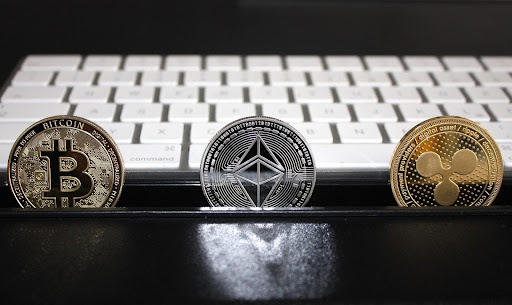The growth of the cryptocurrency industry is one of the most surprising developments that have taken place in the tech and financial environments over the past decades. No one could have predicted how influential this novel asset class would become when Bitcoin, the first-ever crypto, was launched in 2009. As the years passed, the crypto market expanded exponentially, defying all expectations and breaking one record after another.
Data shows that Bitcoin and Ethereum, the two largest cryptocurrencies commanding over 50% of the market, boast a combined value of more than one trillion dollars. A quick look at Bitcoin’s evolution of the Ethereum price USD is enough to gauge the success of this asset class. This is nothing short of spectacular given their relatively short time since they’ve been around compared to more traditional assets.
But have you ever stopped and wondered what’s been fueling this extraordinary rise, and what’s motivating people to invest in digital assets? The lure of crypto investing is as strong as ever despite the numerous obstacles getting in the way of widespread adoption, so let’s find out why so many people continue to pour money into crypto – and why some of them don’t.
Potential for high returns
Crypto gained a reputation as a get-rich-quick scheme following Bitcoin’s early bull runs. After the word spread out about investors making massive profits and even reaching millionaire and billionaire status by investing in the pioneering coin, plenty of other traders and investors rushed to get a piece of the pie, hoping to earn quick money.
Although we now know it’s highly unlikely to amass fortunes and become rich overnight by investing in digital currencies, crypto investments still offer the opportunity to enjoy substantial gains. As a new and extremely volatile financial instrument, crypto is a highly speculative investment that can result in great profits for those who are willing to take the risk. This ability to provide higher profits than traditional investments has put crypto on investors’ radars and keeps fueling its popularity.
A reliable long-term investment
An unstable economy where issues such as high inflation and interest rates affect people’s ability to manage their finances and save money is also pushing consumers toward crypto investment. Fiat money is issued and influenced by the measures and policies implemented by governments and central banks, and therefore, it can lose value during times of recession, putting a strain on people’s financial lives.
By contrast, crypto is deflationary in the sense that most digital currencies are designed with a limited supply and have mechanisms in place to regulate the number of coins released into circulation. Bitcoin is the most relevant example in this respect, with a hard cap set at 21 million coins and quadrennial halvings reducing the rate at which new coins are generated to maintain scarcity and balance supply-demand dynamics.
This means crypto is not controlled by a central entity that can interfere with its value, which makes it a reliable and inflation-resistant store of value. For this reason, those who want to protect their assets from hyperinflation or don’t trust traditional financial institutions to handle their funds are using crypto as an alternative investment.
Diversification
Shrewd investors know they shouldn’t focus on one single asset type when building their portfolios. They also know that including high-return investments might pay off in the long run. Diversification might be the most important risk management strategy to keep in mind before stepping into investing. So, if one asset doesn’t do well, the other assets that perform better will balance out the financial loss.
From this perspective, crypto can be an interesting asset to consider, giving investors the chance to create a more varied and resilient portfolio and reap the rewards. It’s up to each investor to decide how much of their total portfolio to allocate to crypto, but the general rule is to keep it below 10%.
A revolutionary technology
Crypto assets are underpinned by blockchain technology – a revolutionary innovation whose transformative potential has already been demonstrated in various industries and sectors such as finance, healthcare, and supply chain management, and promises to expand to many other areas of activity, streamlining operations and introducing new functionalities and avenues for innovation.
When people invest in crypto, they also support the development of blockchain technology and become part of this innovative ecosystem that is said to be instrumental for the future of our society. As blockchain technology expands its reach, crypto is also expected to evolve alongside it and contribute to its development.
Reasons to pass on crypto investing
Not everyone has been captured by crypto’s magnetism and is as thrilled about investing in digital assets. The main reason skeptics cite for their reluctance is volatility. Although the wild price swings make crypto a desirable asset for daring investors, it also pushes away risk-averse individuals who are not comfortable with constantly being on the edge and putting their money on the line.
The lack of regulatory clarity is another hurdle that stops people from investing in crypto. The varied approaches to crypto regulation across the globe pose an issue for well-intended investors, keeping them from entering the market. Crypto’s decentralization and the lack of a central authority to regulate and oversee crypto transactions means investors have to handle their own security and learn how to protect their assets. If something goes wrong, there’s usually no agency or official body to turn to for help.
Let’s not forget that crypto is by no means a foolproof venture. On the contrary, we’re dealing with a very young asset class that is highly unpredictable and still has a long way to go to reach maturity. Just because the industry has seen rapid growth in the past years doesn’t mean it will continue to thrive in the years to come. Since the crypto space is full of surprises, no one can tell what tomorrow might bring. This uncertainty makes investors stick to time-tested assets like stocks, bonds, or precious metals.





















